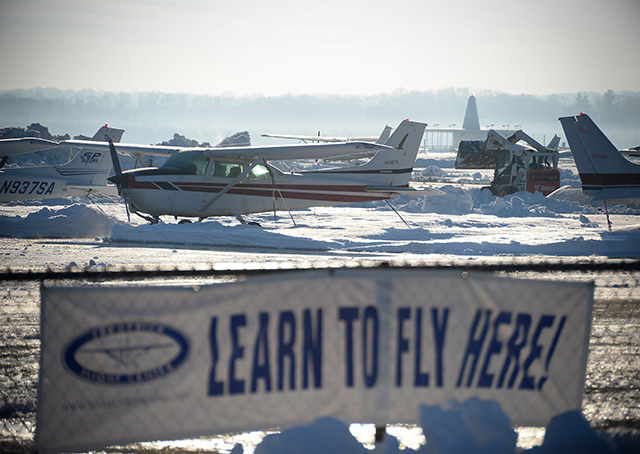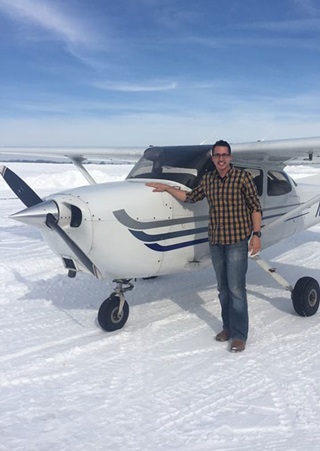
A massive winter storm that wreaked havoc across the Mid-Atlantic and into the Northeast was still being felt days later, as airport crews worked to open runways and taxiways, dig out hangars, and uncover lights.
At AOPA’s home base in Frederick, Maryland, one of the two runways at Frederick Municipal Airport remained closed Jan. 28, and piles of snow trapped aircraft in hangars as pilots eyed sunny skies and perfect flying weather with nothing to do but wait.
The National Weather Service recorded snowfall totals that would be impressive in Maine or the Mountain West, and far outpaced the typical winter storm for Maryland, Virginia, West Virginia, and Pennsylvania. Official observations posted Jan. 25 ranged as high as 37 inches in at least two Maryland counties, though unofficial observations topped 40 inches in some locations. (A 43-inch report from Berkeley County, West Virginia, was official.)
Up and down the region, notams announced airport closures, runway closures, and taxiway closures into Jan. 28, the first day that Maryland’s Frederick Municipal Airport opened (with one runway and one taxiway open).
Some airports bounced back faster than others. Lancaster Airport in Lancaster, Pennsylvania, 65.3 nautical miles northeast of AOPA’s Frederick headquarters, logged 30 inches of snow but managed to launch a student solo and a checkride barely 24 hours after the last flakes fell.

“I’ve got to give credit to our airport authority, they cleared us out quite a bit,” said Zach Hurst, chief instructor at Aero-Tech Services, in a telephone interview. “The runway was in pretty good condition Monday.”
Hurst said Aero-Tech staff still had loads of snow to contend with, but by Jan. 28 the ramps and runways were clear, with only the tiedown spots still buried.
“That teamwork really helped and made it possible,” Hurst said. With temperatures forecasted to climb into the 50s Fahrenheit in the days ahead, Hurst looked forward to seeing taxiway lights again. “Just yesterday I saw that the tops of the lenses are poking through.”
The staff of Frederick Flight Center, meanwhile, reported Jan. 28 that just two of the school’s aircraft had been released from the snow by noon.
East of Frederick, Leesburg Executive Airport (at the edge of the Washington, D.C., Special Flight Rules Area in Virginia) reported that the runway was plowed to a width of 80 feet, with 5-foot snow banks observed on Jan. 27.
Farther south, at Richmond International Airport, snow piles on the commercial ramp measured 8 feet high, and the flight standards district office ramp remained closed Jan. 28. Notams for Norfolk International Airport in Norfolk, Virginia, on Jan. 28 indicated that runways were open, but the approach lighting system for Runway 23 was out of service as of Jan. 27, and expected to remain so until Feb. 1. Most, if not all, airport approach and taxiway lights remained covered in snow between there and New York. Culpeper Regional Airport in Culpeper, Virginia, reported 6-foot snow banks adjacent to the runway, with all taxiway lighting covered. A list of affected airports might be long enough to occupy an idle pilot’s time until it all melts.
NASA astronaut Scott Kelly, aboard the International Space Station, posted photos of the epic blizzard, including one that captured a blast of lightning visible through the clouds from above.
The official snow totals prompted some questions in Washington, where Ronald Reagan Washington National Airport recorded, officially, just less than 18 inches. Washington Dulles International Airport and Baltimore/Washington International Thurgood Marshall Airport each recorded more than 29 inches, prompting some to question the report about Washington National. It turned out that the measuring device used there was buried in snow.



